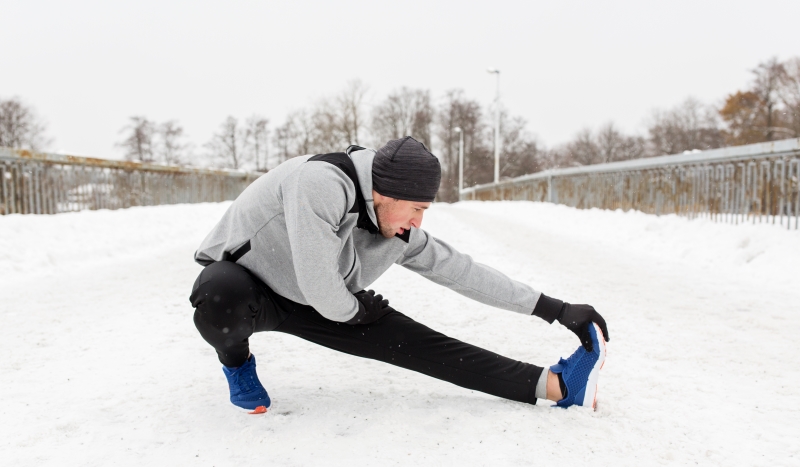Flexibility Training & Stretching for Skiing

It's often ignored, but regular flexibility training provides a number of benefits including a quicker recovery from a workout, less of the niggly injuries we all seem to get in the first place and overall give you a better performance.
For most people, flexibility training consists of a couple of quick stretches done at the end of their warm up, before they actually start exercising. However research suggests that this is not the best time to stretch.
When Should I Stretch?
To get the best out of your body in terms of flexibility, it's always best to do it when your muscles are warm. This invariably means that's at the end of your workout.
If you're on the slopes, there's still time to do some essential stretches - the benefits of the 10 minute delay to your appearance in the bar will soon start to show.
Focus for Skiers
The most important areas that you will need to focus on on are those that do the most work on the slopes. This means we're talking your legs and your 'trunk'. In particular, you will want to stretch the calves, hamstrings, hips, and quadriceps.
The beauty of most flexibility work, pre-skiing, is that you can do it at the gym or at home - spending fifteen minutes per day stretching while watching TV will yield benefits when you hit the slopes. Consistency is also important when stretching, so try to do a bit every day.
Unlike cardio and strength work, flexibility work should also be done when you are actually on holiday. Taking a few minutes to stretch out at the end of a hard day's skiing will speed your recovery and reduce your pain and stiffness the next day.
Include Balance & Co-Ordination Exercises
The other factor people often ignore in their training is balance and coordination, yet these are vital for skiers.
Any type of training that includes elements of instability will help - this can include exercises that use an exercise ball, balance discs, BOSU, or wobble boards.
Simple Balance Exercise with no Equipment
But you don't need those if you can't afford them. All you need is a room with a corner! You'll see why once you have achieved the first part of the exercise.
Simply stand with your back in the corner of a room - about a foot from each wall. Then for beginners, lift one foot from the floor and try to balance for 30 seconds.
Relax and repeat. Do this 5 times for each foot, switching foot each time until you have done 10 exercises. Within the space of a week you should find this very simple.
Then, try the same exercise with your eyes shut for 10 seconds to start and then build time through to 30 seconds. This will be a lot harder.
This simple exercise will help you developing some sensory awareness, but also help with lateral balance as well as give you a feel for how your foot can make small and quick adjustments - even on the flat.
In Summary
You should start your training at least 6 to 12 weeks before your holiday.
- Aim to stretch every day if possible
- Focus on the muscles most used in skiing - those of the calves, hamstrings, hips, and quadriceps
- Stretch after your workout, or in the evening
- Be sure to include some cardio and strength training in your training program
- Look for ways to add more activity to your everyday life - taking the stairs, walking a bit more etc
By improving your flexibility and balance, you will ski better and recover faster - allowing you to pack more into your holiday.

 France
France Andorra
Andorra Czech Republic
Czech Republic New Zealand
New Zealand Sweden
Sweden Austria
Austria Bulgaria
Bulgaria Finland
Finland Norway
Norway Switzerland
Switzerland Italy
Italy Canada
Canada Japan
Japan Spain
Spain USA
USA













